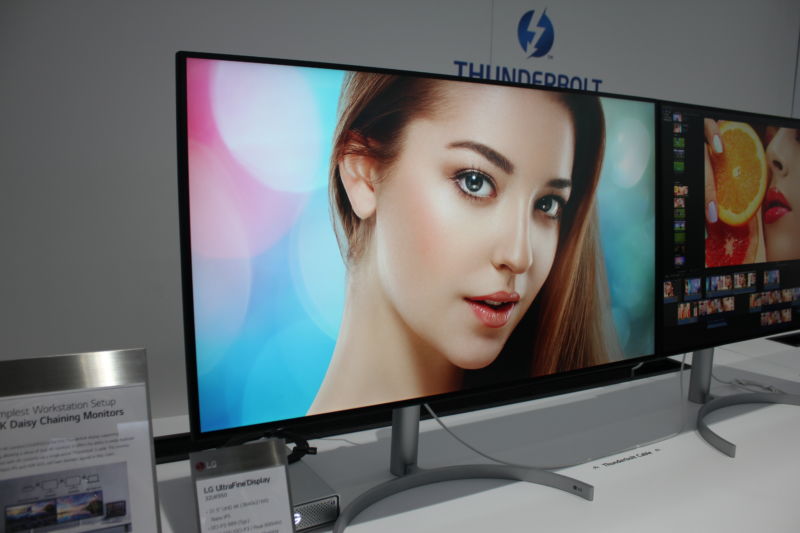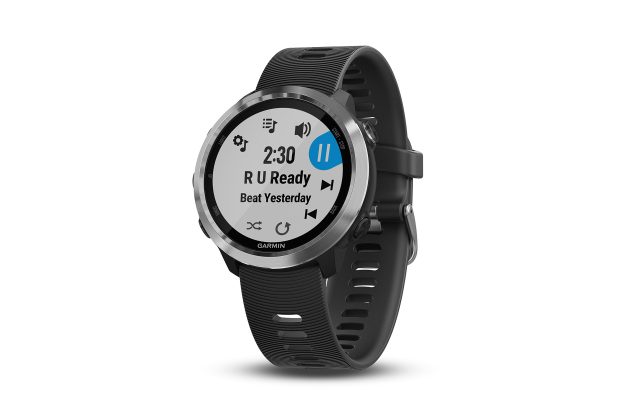

The following are the gadgets, computing devices, and wearables announced or shown at CES that most impressed the Ars team. Some were selected because they promise to bring fresh ideas to users, while others were selected because they appear at first glance to be impressively engineered and designed for quality.
Unfortunately, some of the world's most innovative tech companies don't make a big showing at CES. Instead, they choose to announce or show their products elsewhere—or they don't make an appearance at all. For that reason, Ars can't claim that this is a comprehensive list of the most promising devices of the year.
But, if nothing else, CES gives us a glimpse of what the consumer electronics industry is prioritizing right now. Sometimes those priorities become cornerstones of consumer and enterprise technology for years to come, while other years yield experiments that go out of focus in short order. The emphases on convertibles over tablets and the prevalence of voice assistants seem to have legs. Other things, like our selections for best desktop PC or the biggest surprise at CES, are curious ideas with uncertain futures.
Here are the selections.
Best laptop or convertible: Lenovo ThinkPad X1 Yoga
-
Lenovo ThinkPad X1 Yoga 3rd generation.
-
It's also available in silver.Lenovo
Déjà vu. You might remember that the Lenovo Thinkpad X1 was our pick for best laptop at CES last year. Our own Peter Bright called the Lenovo ThinkPad X1 Yoga "the platonic ideal of a modern laptop." And now there's a new one, and we think we'll like it just as much.
We liked the previous model's robust connectivity options, fabulous keyboard, and TrackPoint. The new model doesn't sacrifice any of those things. Instead, it adds "HDR" (albeit at only 500 nits) to a 2,560×1,440-pixel display that supports 100 percent of the Adobe RGB color space. The processor bumps up from a 7th-gen Kaby Lake to an 8th-gen Kaby Lake-R, and there's an option for a Windows Hello-ready IR camera. Neither of those upgrades affects the existing fingerprint reader. There's also a physical camera shutter, so users who want privacy don't have to mar the device with strips of tape.
Finally, the microphone has seen some upgrades—it's now a 360-degree far field array microphone, ideal for conferencing and helpful for interacting with Windows 10's Cortana or other future digital assistants. These are notable improvements to what was already a great all-around laptop. We're looking forward to spending more time with the X1 Yoga and putting it through its paces.
Best wearable: Garmin Forerunner 645 Music

The Garmin Forerunner 645 Music addresses the biggest complaint with last year's Garmin Vivoactive 3—lack of music storage. The 645 Music brings 3.5GB of storage, which holds about 500 songs in most cases—a little more than the competing Fitbit Ionic. It supports downloading of music via iTunes or Windows Media Player on your other devices, and it supports downloading iHeartradio playlists. However, there's no LTE support, so you won't be streaming on the go.
Still, as Ars' Valentina Palladino wrote when the Forerunner 645 Music was announced, it's surprising that Garmin has taken this long to release a wearable with music storage. It's a welcome addition, because Garmin's smartwatches are excellent in many other areas. We like Garmin's OS, which is better than that offered by the competing software on the Fitbit Ionic. Notifications from Android and iOS devices are supported, with the ability to reply to texts via the watch available to Android users. It also has Garmin pay support, and it has excellent fitness and tracking features. And it will last up to seven days in smartwatch mode (or five hours using GPS and playing music).
The only downside is the price: it's steep, at $449.
Best VR/AR device: HTC Vive Pro
-
If the original Vive's boring-gray color did nothing for you, try this shiny shade of blue.
-
We're curious how the new stereo forward-facing cameras will be utilized by future VR games and apps.
-
Vive Pro's reveal included unclear animations that hint at a more comfortable fit.
-
Will the lenses receive improvements other than a 78-percent boost in resolution? For example, redesigned lenses? HTC didn't clarify.
-
Snazzy.
-
So blue.
-
How much better will these sound than 2017's HTC Vive Audio Strap headphones? We look forward to finding out.
-
VR headsets... in... spaaaaace.
-
Old HTC Vive wands, not the newer SteamVR "Knuckles" prototype.
Two years after the initial launch of the HTC Vive, HTC has announced the Vive Pro, a new headset that increases the resolution of the image by 78 percent over its predecessor. It also features slightly improved ergonomics (though we still were not as impressed here—this is not the most comfortable headset) and built-in headphones. With a wireless adapter coming up, that could all add up to removing a lot of the hassle of gaming or diving into VR experiences on the Vive, which was arguably already the best consumer VR headset.
The Vive Pro also adds a second forward-facing camera and a second microphone to help with noise cancellation. The FOV is still 110 degrees.
We used the Vive Pro to play the game Raw Data, which was released in October of last year. It's a first-person shooter in which you dash around an arena fighting off waves of robots using either guns or a sword. The visuals were much sharper than those on the PlayStation VR or Oculus Rift headsets you might otherwise play on. Poor resolution is one of a handful of problems that holds VR back from fulfilling its promise, so the Vive Pro takes a welcome step forward.
Best PC peripheral: LG 32UK950
-
LG 32UK950.Samuel Axon
-
Our only major complaint is that we don't see a lot of cable management potential here.Samuel Axon
-
The 5K, ultra-wide cousin to our pick, the LG 34WK95U, also looks promising, but it's for a more specialized audience.Samuel Axon
Sometimes, the best contender isn't the best because it's particularly "innovative"—a word thrown around at CES with reckless abandon. Sometimes, the "best" is just really good. We saw more monitors than we could count at CES this year, and while the lighting is never ideal for assessing them, we were impressed by this LG monitor.
The 32UK950's 4K display uses LG's proprietary "Nano IPS" technology, which was just announced. LG claims it applies nanoparticles to the display's LED backlight in an effort to absorb excess light wavelengths. There are some similarities here to Samsung's quantum dots implementation. The result should be improved color accuracy. While we're curious to test this out in the future to see what, if any, impact this makes, that's not the only reason we chose it.
Ninety-eight percent of the DCI-P3 Wide Color Gamut is covered, which is an improvement over LG's current models. HDR-10 is supported, albeit at the HDR-600 standard that we're seeing dominate this year's HDR-capable monitors. There's also a Thunderbolt 3 port that can actually feed power back to the connected PC. We loved the design of this monitor. There's just so little to be displeased with here; it's clearly a great monitor for those deeply concerned with picture quality and accuracy. Our only complaint is that it doesn't provide much in the way of cable management options. But that's a small complaint.
We were also impressed with the ultra-wide cousin to this monitor, the 34WK95U (also pictured under the header above). It has similar specs, but it comes in at 5K with a 5,120×2,160 resolution. We went with the standard aspect ratio monitor because it's appropriate for more users, but that doesn't make the ultra-wide version any less promising.
reader comments
122